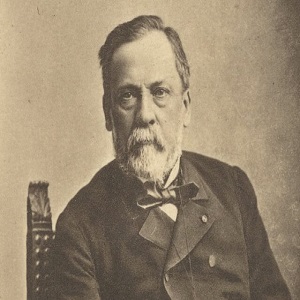Doctor Curmudgeon® Lift a Mug to Louis
By Diane Batshaw Eisman, M.D. FAAP Doctor Eisman is in Family Practice in Aventura, Florida with her partner, Dr. Eugene Eisman, an internist/cardiologist
Louis Pasteur was born in 1822 and became one of the giants of science. He was an early advocate of the germ theory of disease, developed pasteurization, was a chemist and microbiologist, and created many vaccines.
I was surprised to learn that he was considered a master brewer. Louis Pasteur, the scientific genius, had also focused his talents on the brewing of beer!
How on earth did this professor of physics and chemistry become intrigued by the process of brewing? Well known for his study of vaccines, I had never heard of his research on beer.
It was not such a strange path. His groundbreaking work on vaccines, microorganisms, and fermentation helped his understanding of why beer spoiled.
Pasteur had this strange theory that there were such things as microorganisms and they were the cause of many diseases. He was derided by most of the scientific community because they knew that diseases did not come from tiny things you could not really see. Of course, disease resulted when the individual had some kind of weakness or imbalance.
His first success came when he noticed that his cultures of chicken cholera became weakened after many generations. This led him to the bright idea of inoculating chickens with this attenuated strain. His vaccination made the chickens resistant to the disease.
He then applied his vaccination theory to anthrax–a very serious disease that afflicts both humans and animals. (Anthrax is caused by the bacterium. Bacillus anthracis).
Louis Pasteur—well known for his work on vaccination became a beer maker due to of one of his chemistry students. The student’s father had a problem. The father made wine by fermenting beetroot. Unfortunately, there were times when his alcohol tasted sour. Not good for sales!
In those days, people thought that fermentation was a simple breakdown of sugar into alcohol. The experts of the day fervently believed that this occurred due to vibrations which caused instability and thus the sugar just broke itself down to alcohol. The main scientific theory of fermentation was one of spontaneous generation.
Pasteur found yeast cells in the fermenting wine vats, and he recognized that these were living organisms. In the vats, there were other microorganisms that contaminated the alcohol and produced lactic acid which gave it that yucky sour taste.
He further experimented with heating the wine and found that these contaminants were destroyed when heated. And so he had sterilized (or pasteurized) his mixtures. By adding pure yeast cultures to his now sterile mashes—voila’—he had stable and reliable fermentations. This discovery made Pasteur and the student’s father very happy.
A Scientific American article of 1874, comments: “By boiling the infusion of malt and hops cooling out of contact with air and fermenting with a pure yeast…a beer is produced of superior quality.”
And so we can all lift a mug to a master brewer: Louis Pasteur!
(Note from Galahad, the Siberian husky who is Doctor Curmudgeon’s cousin and her editor: Edward Jenner in 1797 created the first vaccine by inoculating a child with cowpox to protect him against smallpox. In addition to scientific curiosity–Pasteur held a hatred for Germanic things ever since the Franco-Prussian War of 1870 when France was forced to cede Alsace-Lorraine, a hops producing area. Pasteur made beer for revenge–wanting to show that French beer was better than German beer.)
Dr. Curmudgeon suggests “Bitter Medicine”, Dr. Eugene Eisman’s story of his experiences–from the humorous to the intense—as a young army doctor serving in the Vietnam War.
Bitter Medicine by Eugene H. Eisman, M.D. –on Amazon
Doctor Curmudgeon® is Diane Batshaw Eisman, M.D., a physician-satirist. This column originally appeared on SERMO, the leading global social network for doctors.
SERMO www.sermo.com
Click Here to Order Boxing Interviews Of A Lifetime By “Bad” Brad Berkwitt


